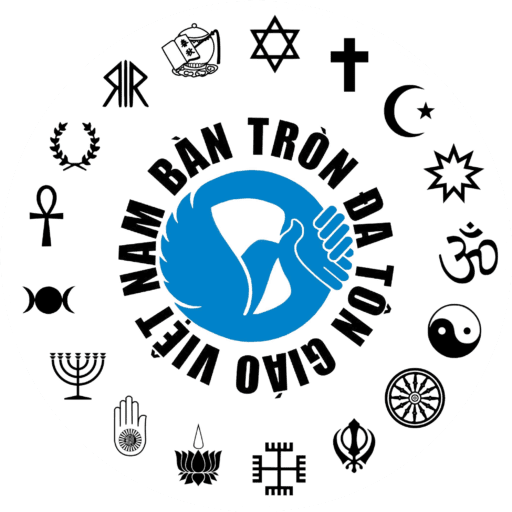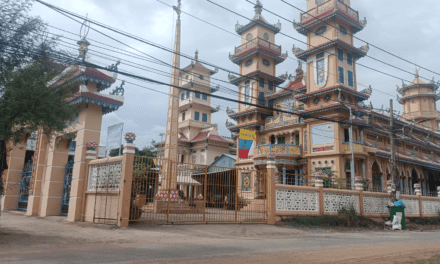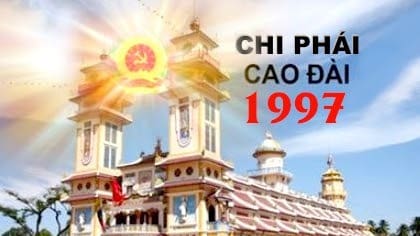Facing mounting international criticisms, in the early 1990’s the Vietnamese Communist Party (VCP) adopted a new strategy: to force Cao Dai Religion adherents to join a new religion that they would create and control. The Secretariat of the VPC’s Central Committee on November 14, 1992 issued Announcement No. 34-TB/TW, marked as “Secret” and titled “Opinions of the Secretariat regarding Undertaking and Tasks towards the Cao Dai Religion.” This document laid down the VCP’s policy of dividing and isolating Cao Dai communities: “Regarding its organization, we shall not allow the Cao Dai Religion to form an administrative structure that is similar to that of a government, and shall not allow the different Cao Dai Sects with national presence to unify under any form, even under the form of an ‘alliance’…”
Implementing this strategy, on May 27, 1996 the VCP’s Provincial Committee of Tay Ninh Province submitted its “Plan No. 01” to the VCP’s Central Committee. This internal document acknowledged that the VCP’s strategy to “encircle the Cao Dai Religion and restrict it to Tay Ninh locality until its eventual death” had not succeeded, and proposed instead to turn the new Governing Council into a religious sect operating on the national scale. On May 29, 1996 the VCP’s Provincial Committee of Tay Ninh Province designated Communist party members to form a Steering Committee to oversee the formation of the new sect and ensure that:
- It will be limited to being a sect;
- Spiritist séances will be banned; and
- Its Sacerdotal Council will have only two levels instead of the five administrative levels of the Cao Dai Religion.
On September 30, 1996 the Mass Mobilization Committee of VCP’s Central Executive Committee issued Announcement No. 319/TB.BDV, marked “Secret,” instructing the Fatherland Front, the Central Committee on Religious Affairs, and the Ministry of Interior that, in the process of forming the new religion, they must “[e]nsure the strict leadership of the VCP. Build core forces and positive elements to meet the need of forming the [political] base for the near and long terms… Guard against, fight off and deal with any manifestation of opportunism, division, or opposition by bad elements.” In a follow-up top secret directive, the Mass Mobilization Committee emphasized the importance of “screening, selecting and rallying the core forces, political bases and party members (including former party members) toward establishing core cells directly led by party committees at different levels… Should focus on the quality and give importance to the principle of secrecy, tight control in core tasks, particularly relating to the political bases.” Circular No. 31 HD/DVTW, dated February 16, 1998 and marked “Secret”
The Steering Committee set up by the VCP’s Provincial Committee of Tay Ninh Province oversaw the drafting of the new religion’s charter, which renounced spiritism, the theological core of the Cao Dai Religion; created an organizational structure with the Governing Council at the top; and allowed clergy members to be appointed or promoted without divine consent through spiritist séances as required by the Cao Dai Religion’s Holy Constitution and New Canonical Codes. The new sect was so different from the Cao Dai Religion that it would have constituted a different faith, except that its creators were committed atheists whose goal was to destroy a religion rather than to found one.
On May 9, 1997, by Decision No. 10/QD/TGCP the Government approved the charter of the new sect and accorded it legal status. Its official name as recognized by the government, “Dai Dao Tam Ky Pho Do Cao Dai Tay Ninh”, contained the attribute “Cao Dai Tay Ninh” to specify that it was a sect of the Cao Dai Religion. For ease of reference, the new sect we refer to this new entity as the 1997 Sect.
The 1997 Sect’s Governing Council was populated with individuals who were closely associated with the VCP or were members of the government:
- Mr. Tho Ngoc Ho, Chair of the Governing Council, was Vice Chair of the Central Committee of the Fatherland Front of Vietnam for 1994-1999. He was also a member of the Central Committee of the Fatherland Front of Tay Ninh Province.
- Tam Thanh Nguyen, Vice Chair of the Governing Council, was member of the Fatherland Front of Tay Ninh Province for 1994-1999. In July 1997 he was selected by the VCP to be a member of the National Assembly.
- Mrs. Nhin Thi Huynh, Member of the Governing Council, was member of the Fatherland Front of Tay Ninh Province, for 1994-1999.
It is telling that the top three members of the Governing Council of the 1997 Sect belonged to the Fatherland Front of Tay Ninh Province, which in 1978 issued the verdict to abolish the Cao Dai Religion.
The government turned over to the 1997 Sect all properties of the Cao Dai Religion that were under state management while maintaining tight control of how the 1997 Sect operates.
Canh Quang Tran, presently a priest of the 1997 Sect and the first and former Chair of its Overseas Representative Committee, once admitted the shift in the CPV’s policy towards the Cao Dai Religion: “This policy was manifested by granting legal status to the Cao Dai 1997 Sect, [and] approving its charter dated April 5, 1997, which was drafted by the Governing Council… under the command of the Government of Tay Ninh Province.” Declaration of Cao Dai Overseas Missionary, July 3, 2000
DECEPTION TACTICS
In 2007, with the approval of the government, the 1997 Sect changed its name to “Dai Dao Tam Ky Pho Do (Cao Dai Toa Thanh Tay Ninh) [“Third Universal Amnesty Great Way of God (Cao Dai Holy See Tay Ninh)”]. After this name change, Mr. Nguyen Thanh Tam, then Vice Chair of the Governing Council of the 1997 Sect, declared himself Cardinal and appointed himself Chair of the Governing Council. Although it is a different organization, representing a different faith and bearing a different name, the Governing Council of the 1997 Sect deliberately uses the letterhead, seal, and other insignia of the Cao Dai Religion in all its official communications and publications. This was viewed by Cao Dai followers as the 1997 Sect’s attempt to deceive the public and the international community by passing itself to be the Cao Dai Religion.
Because of this deception, the growth of the 1997 Sect has been incorrectly interpreted by some foreign observers as a sign of improved religious freedom for Cao Dai followers. Nothing could be farther from the truth.




